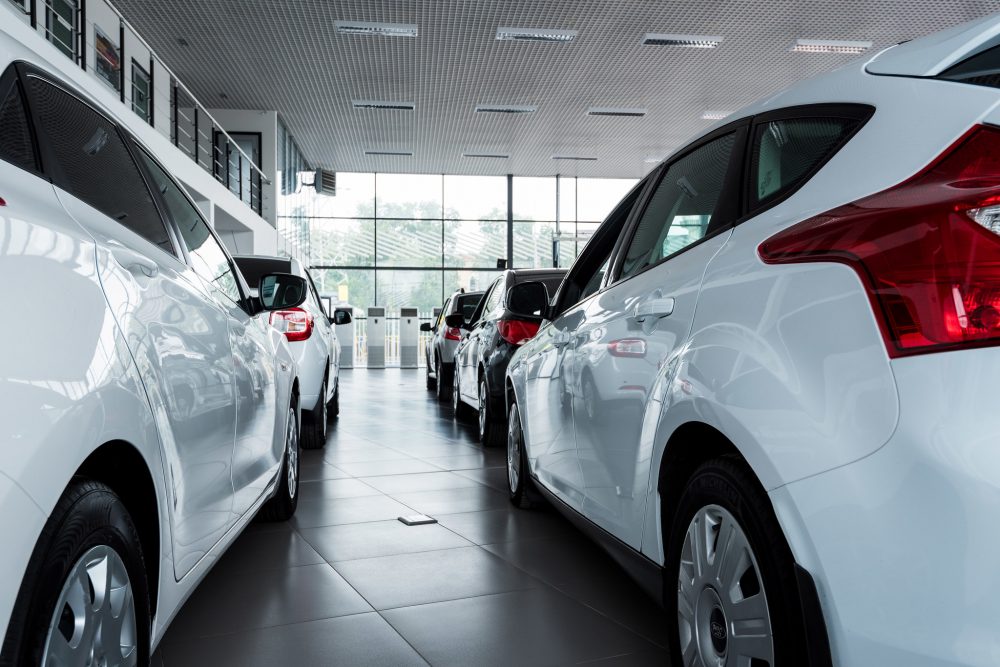What Happens to Unsold New Cars?
If you’ve been following the news (and oh, boy, what a whirlwind that has been), you probably know that there’s a supply and demand issue in the auto industry at the moment. In short, there is high demand for cars and not enough inventory to keep up with that demand. But what happens when circumstances flip and there are more cars than there are people looking to buy? What happens to those unsold new cars that sit on dealerships’ lots for months with no bites?
To Buy or to Lease? This guide will help your decision for your next car
It’s up to the dealership, not the OEM
Because of the way the auto industry is set up, automakers do not sell directly to consumers. Instead, they sell their newly build vehicles to car dealership franchises. Those dealerships usually finance the new vehicles rather than buying them outright. That means that the longer a new vehicle sits on a dealership’s lot, the more it will cost them in interest on that loan. And if it doesn’t sell, the dealership can’t return it to the manufacturer.
Additionally, that non-selling vehicle is taking up precious real estate on the dealership’s lot. Dealerships want cars that sell quickly so they can replace it with another vehicle that will sell quickly. The faster a dealership can turn its inventory, the more money it will make. Having cars that sit on the lot with no interest is not a great way to do business.
But sometimes, for whatever reason, a vehicle just might not attract the attention of any buyers, which leaves the dealer in quick a pickle. How do they shift that vehicle quickly so they can make room for a more popular model that will make them money?
4 ways dealers get rid of unsold new cars
1. Offering incentives and discounts
The easiest way a dealer can get a vehicle off the lot quickly is to offer an enticing discount or incentive to buyers. So, if you’re in the market for a new car, keep your eye out for deals that could benefit both you and the dealer.
Typically, autumn is a good time to find discounts like this, because dealers need to get rid of as much of their inventory from the previous model year as possible in order to make room for new models. If you see a 2021 and a 2022 version of the same model on a lot, chances are you’ll get a better deal on the 2021 since it’s taking up space that could be housed by a newer vehicle.
Another tactic dealers can use to get rid of a vehicle that’s taking up space is to incentivize salespeople to sell it. You might notice a salesperson steering you toward a particular car that might be different from the one you’re interested in, and this is probably why. If they are able to sell that car, they’ll get a nice bonus from the dealer principal.
2. Repurposing as loaner cars
If the dealer is really having trouble selling specific vehicles, they may opt to turn them into loaner cars for service customers. The benefit of doing this is that the loaner car can eventually be sold as a used car for a decent price because it’ll have low mileage but still be from a recent model year. Vehicles with these features tend to be more appealing to used car shoppers because they’re more likely to have the newest features and don’t have the wear and tear that higher-mileage used cars have.
3. Trading to another dealer
Another option for a dealer to get rid of a new car that’s not selling is to trade it to another dealership. For example, a dealer in a major metropolitan area like New York City might have a truck sitting on the lot that’s not in very high demand in the region. In that case, they might try to trade the truck with a dealer in Texas (because Texans LOVE trucks) in exchange for a sedan that’s on their lot and not selling.
Dealers are usually strategic with the types of vehicles they stock for this reason. Customers in certain regions tend to prefer different types of vehicles. In states with a lot of snow in the winter, there might be a higher demand for AWD vehicles, while states in the south buy more FWD models.
4. Selling at auction
If a dealer has tried offering incentives on the car and not had any luck, and doesn’t want to turn it into a loaner car, they might try to sell it at auction. This is generally a last resort, though. Cars usually sell for less at auction, and the dealer will have to pay fees to the auction house to sell it that way, so they’ll likely end up taking a loss on a new car sold this way.
The Tailgate of the Future: Meet the 2022 Chevy Silverado HD’s Multi-Flex Tailgate
All new cars are eventually sold
The bottom line is that, some way, somehow, all new cars are eventually sold. You’ll never see an abandoned parking lot packed with brand new cars that just won’t sell.
Carmakers are good at estimating demand for each vehicle they sell, so you won’t see Chevy, for example, building a million Spark models and shipping them to dealers across the country. While there is some demand for those vehicles, it’s much smaller than the demand for, say, the Traverse or Silverado, and so Chevy will focus on building more of those models and less of the Spark and the Malibu.
By analyzing buying trends this way, automakers can make decisions about which models to discontinue, which ones to build less of, and which ones to expand upon. By doing this, the automakers and their dealership franchises can avoid overstocking the wrong models and focus on the ones that will make them the most money.
Catherine Hiles (she/her) is a native Brit living and working in Dayton, Ohio. Cat has written about a variety of subjects, including finance, cars, and parenting. She is a frequent contributor to Dayton Mom Collective, The Penny Hoarder, and WDW Magazine.
Cat lives with her husband, their two kids, and their energetic pitbull mix. She counts running, lifting weights, walking, and reading among her hobbies. See more articles by Cat.




